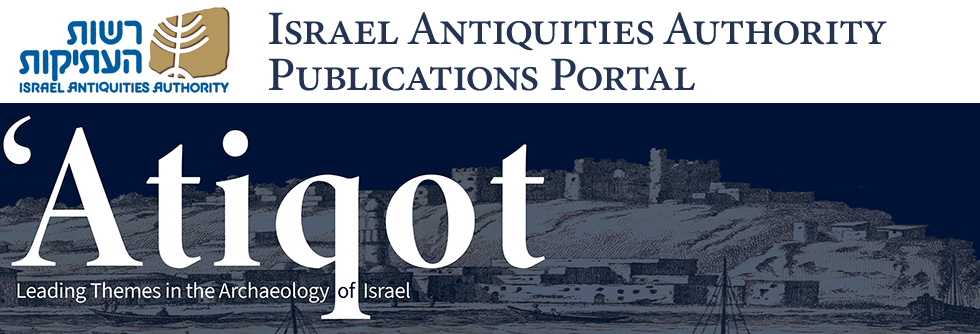Abstract
This article focuses on the ancient synagogue uncovered at Ḥorbat Merot and offers a new interpretation of its various phases. Three strata were identified: Stratum I, predating the synagogue, from the Early Roman period; Stratum II, the construction of the synagogue and its use, with three phases dating from the Byzantine to the Early Islamic periods; and Stratum III, when the building served as a dwelling in the Mamluk period. In the Ottoman period, an Algerian village existed on-site. The excavation of the synagogue yielded many finds, including coin deposits dating from the fourth and fifth centuries CE; a treasury of gold and copper coins; architectural elements; chalkstone vessels; and part of a colorful mosaic depicting King David playing a five-string lyre. The main Stratum II Phase 2 synagogue was apparently destroyed in the 749 CE earthquake and subsequently rebuilt. The later Stratum II Phase 3 synagogue included a gallery, courtyards, a Bet Midrash and a study room(?). The Jewish settlement ended in the ninth–tenth centuries CE.
Keywords
Upper Galilee, religion, Jewish, art, mosaic, numismatics, earthquake, zodiac, treasury
Recommended Citation
Damati, Emmanuel
(2022)
"The Synagogue at Ḥorbat Merot: Its Construction Phases and a New Interpretation of the Finds (Hebrew; English summary),"
'Atiqot: Vol. 109, Article 11.
DOI: https://doi.org/10.70967/2948-040X.1113
Available at:
https://publications.iaa.org.il/atiqot/vol109/iss1/11

